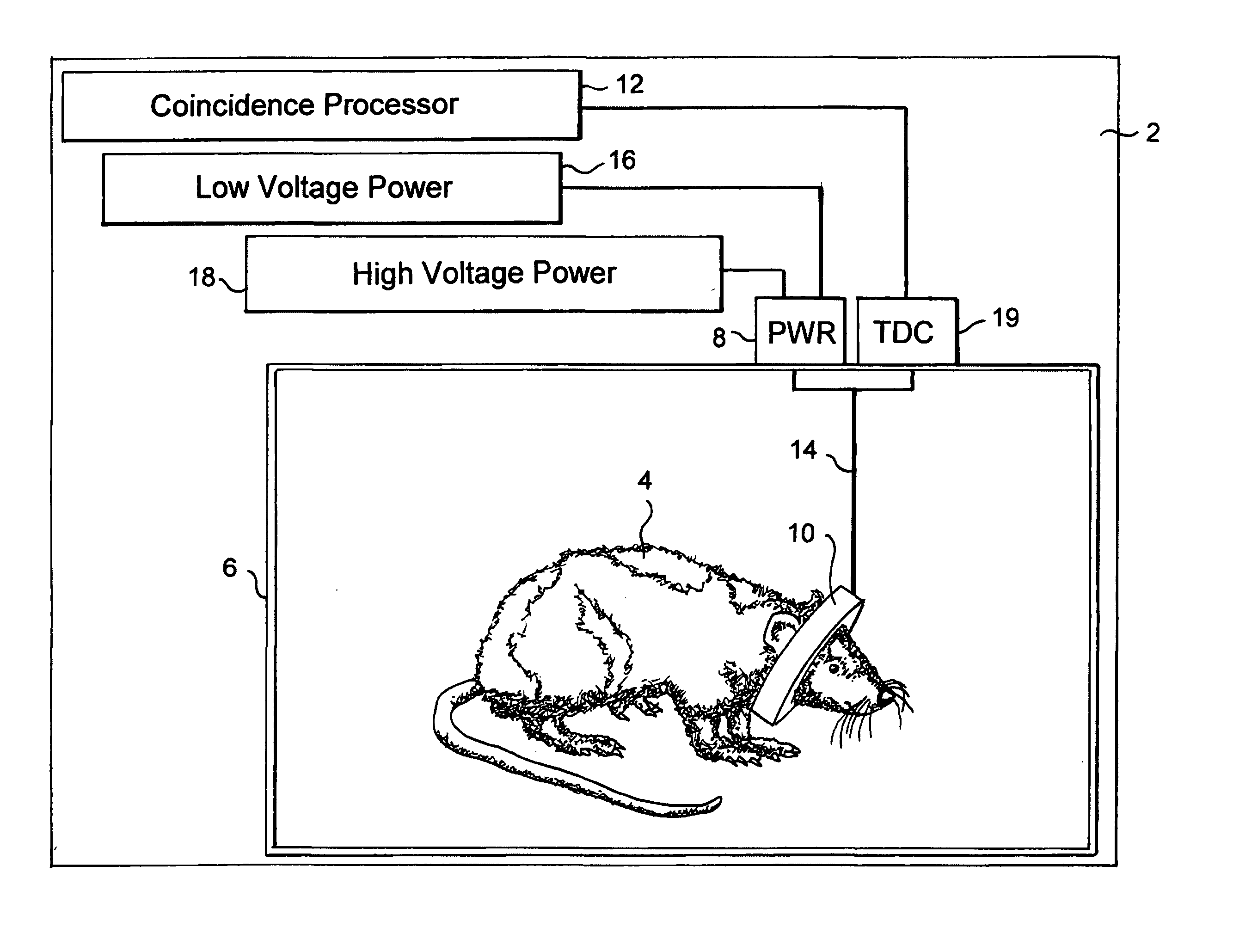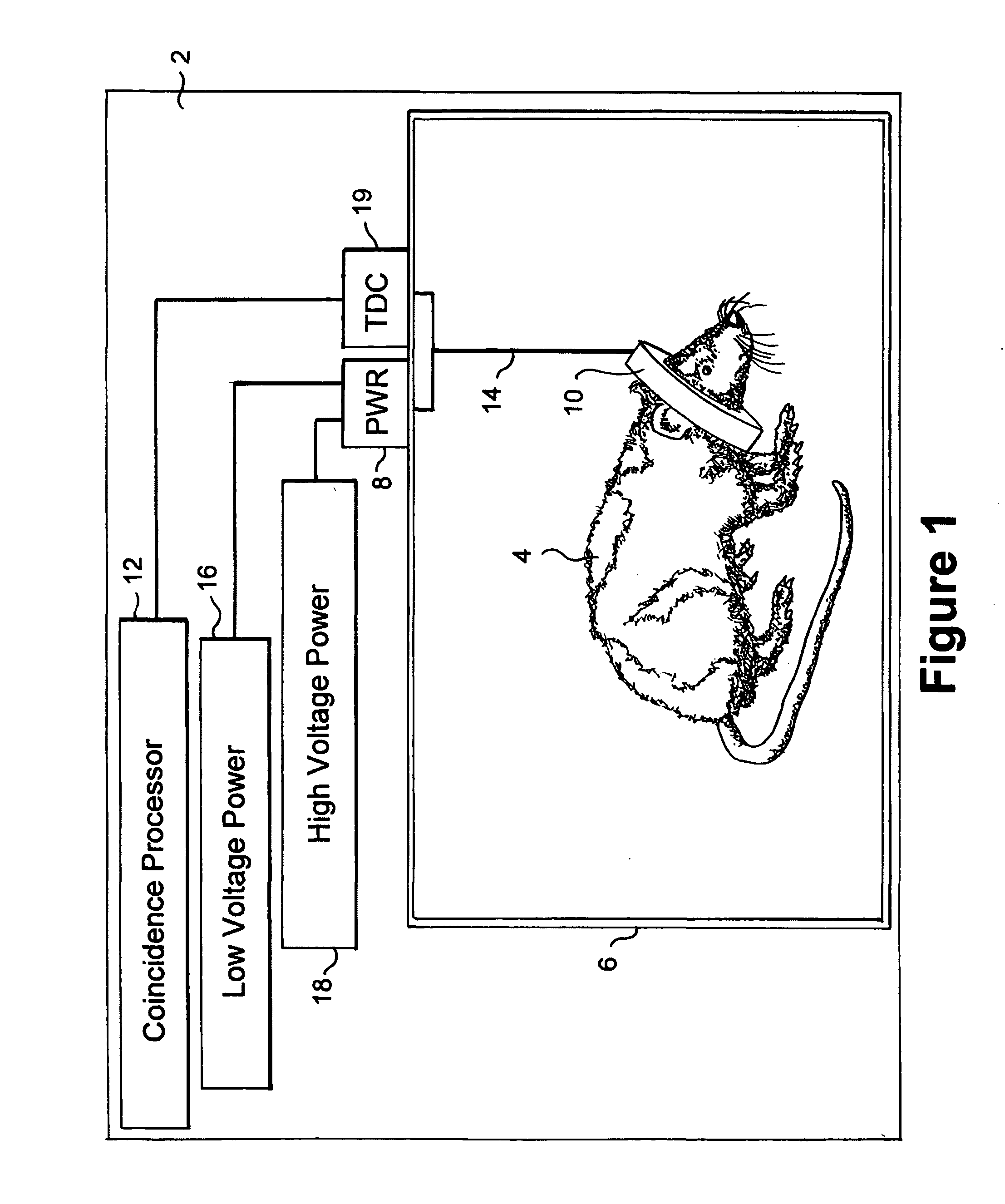Combined PET/MRI scanner
a dual-mode, combined technology, applied in tomography, instruments, applications, etc., can solve the problems of affecting the accuracy of pet imaging, so as to reduce the random coincidence and detector cross-talk, improve timing resolution, and reduce power consumption
- Summary
- Abstract
- Description
- Claims
- Application Information
AI Technical Summary
Benefits of technology
Problems solved by technology
Method used
Image
Examples
Embodiment Construction
[0065] A compact conscious animal positron emission tomography scanner of the present invention addresses the need for imaging of metabolic or chemical activity of conscious animals, especially rats. Rats are commonly used as animal models in medical research because it is possible to genetically alter rats to isolate a specific trait, and to follow the trait through generations. The knowledge gained in these animal models can then be applied, for example, to human disease, cancer, drug research, and drug addiction.
[0066] An additional embodiment of the compact positron emission tomography scanner of the present invention includes the adaptation of the apparatus and methods of the present invention to the imaging of non-compliant moving human subjects.
[0067] The method and apparatus formed in accordance with the present invention provides positron emission tomography (PET) images of chemical and metabolic activity within a conscious animal. FIG. 1 shows a block diagram of a prefer...
PUM
 Login to View More
Login to View More Abstract
Description
Claims
Application Information
 Login to View More
Login to View More - R&D
- Intellectual Property
- Life Sciences
- Materials
- Tech Scout
- Unparalleled Data Quality
- Higher Quality Content
- 60% Fewer Hallucinations
Browse by: Latest US Patents, China's latest patents, Technical Efficacy Thesaurus, Application Domain, Technology Topic, Popular Technical Reports.
© 2025 PatSnap. All rights reserved.Legal|Privacy policy|Modern Slavery Act Transparency Statement|Sitemap|About US| Contact US: help@patsnap.com



